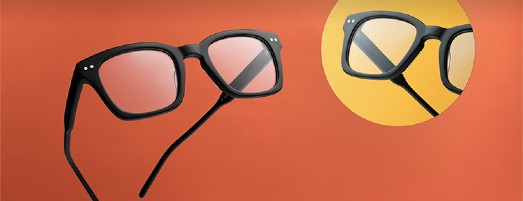20/20 Vision: What does it mean?
Updated JUL 13, 2023 • 8 min read
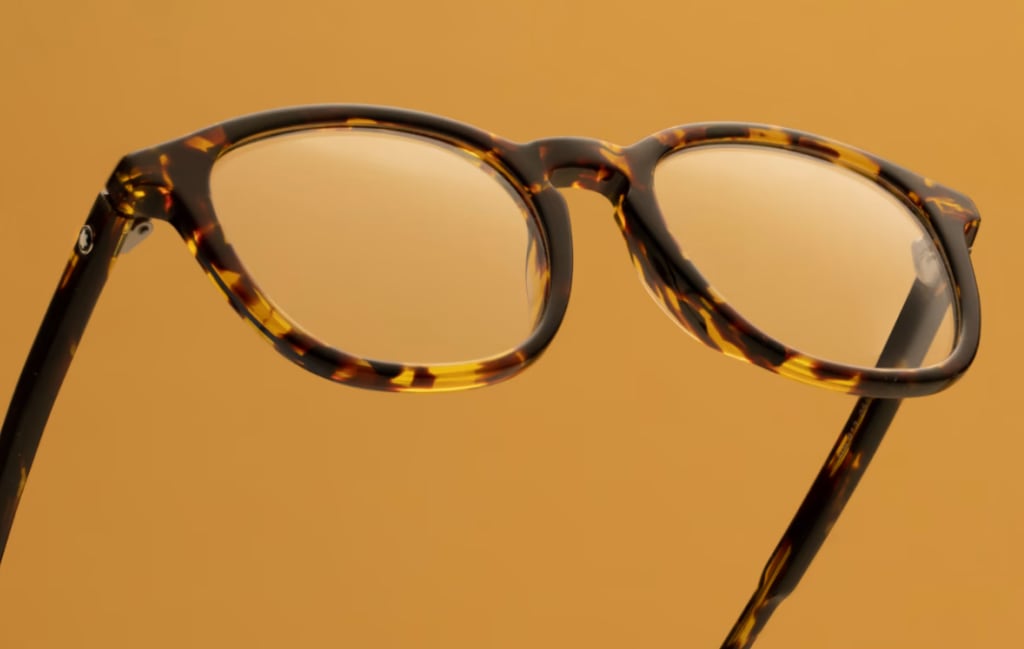
Summary in 30 seconds:
In this article, we’ll dive a bit deeper into the sense of vision, such as what is eyesight, understanding what 20/20 vision actually means, and a few tips on eye wellness.
In this article:
- Vision, the most dominant senses
- What is 20/20 Vision?
- What is Eyesight?
- What does it mean to not have best corrected 20/20 vision?
- Best tips to support eye wellness
Vision, the most dominant sense
While the senses of hearing, touch, smell and taste are important, it is arguably vision that is the dominant sense in humans. An amazing and complex sense, it is learned and developed since the time of birth, and integral in how we visually interact with our environment, judge distances, play sports and learn. The visual system is also involved with circadian rhythm, the day/night cycle.
The visual system is varied and complex, so it should come as no surprise that out of all of our senses, the largest portion of our brain is dedicated to visual function.
What is 20/20 vision?
Visual acuity is the clarity of your eyesight. In the 1860s, the Dutch ophthalmologist Herman Snellen created a standardized chart to measure visual acuity. This chart is known as the Snellen chart. The acuity measured on the Snellen chart is written as a ratio such as 20/20.
The top number “20” refers to the distance (20 feet) between the chart and the patient’s eyes being measured. The second 20 refers to the size letter or shape that can be correctly identified by a person with normal visual acuity. If the acuity is measured as 20/40 for example, then that person would need to be 20 feet to see what a person with normal acuity would see at a distance of 40 feet.
Someone with 20/200 vision needs to be 20 feet from the target while a person with normal visual acuity would be able to see the target at 200 feet.
Visual acuity, with and without correction
Best corrected visual acuity is taken with the optimal glasses or contact lens prescription in place. A person may have 20/200 vision without glasses or contact lenses, but have normal visual acuity with corrective lenses. Being able to see 20/20 with or without a correction is an important indicator of the status of your vision.
Some people are able to see better than 20/20 such as 20/15 or 20/10. A person with 20/10 vision would see the target from 20 feet away while the person with normal visual acuity would have to be 10 feet away.
The measurement of acuity is taken while sitting or standing in one place with a high contrast chart. This is a useful method to assess acuity when determining glasses prescriptions, but it does not provide a complete picture of vision.
There’s more to it
Do the eyes work together as a team? Is the ability to judge distance from an object in the normal range? Is color vision normal? Glare may be a problem in certain lighting situations but may not be evident in the doctor’s office.
20/20 visual acuity is only one part of the visual system necessary for quality vision. The most important question of all that needs to be answered is, “Are the eyes healthy?” While 20/20 vision is good news, it does not preclude the presence of glaucoma, retinal tears, early AMD among other conditions.
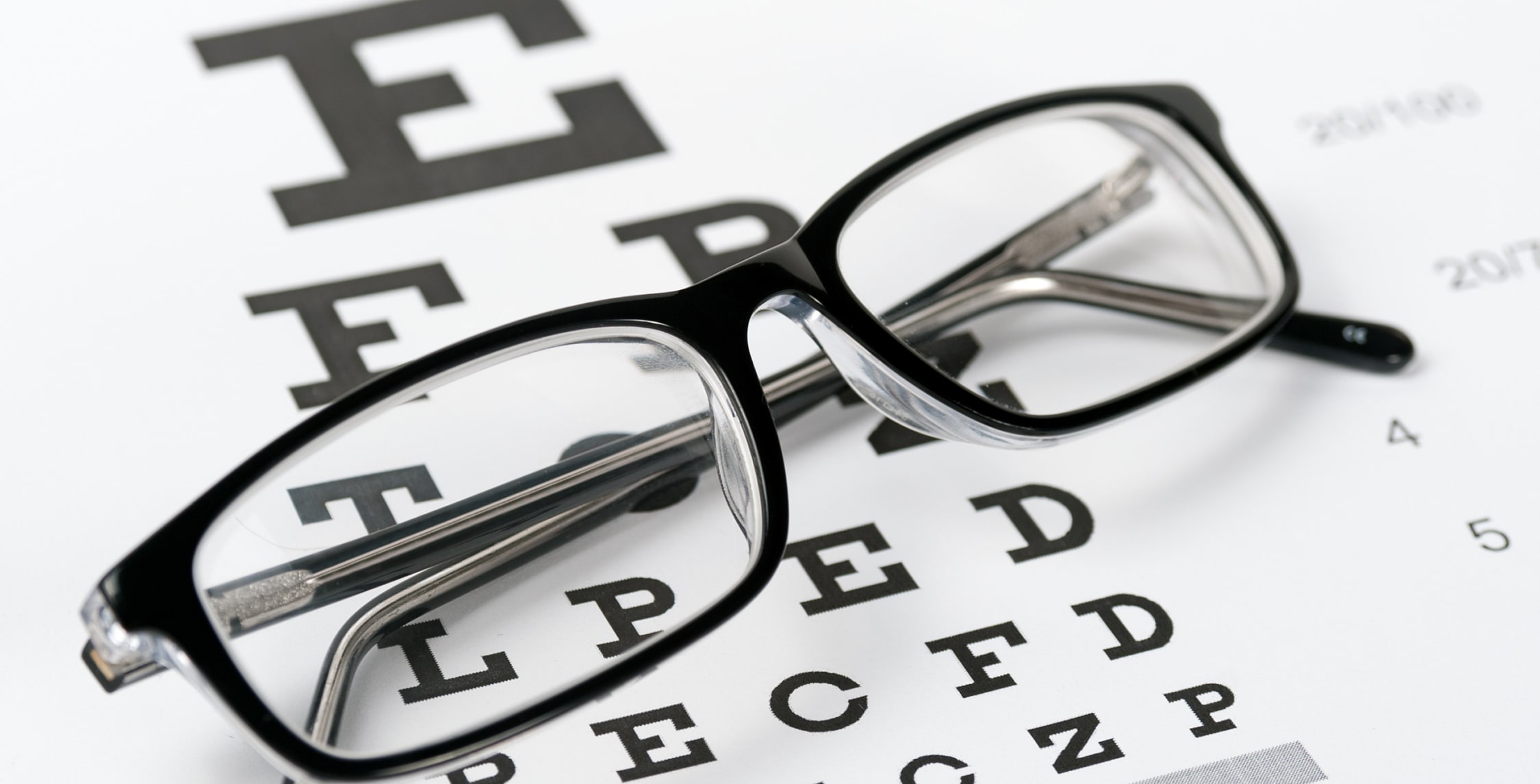
What is eyesight?
Eyesight refers to the eye’s ability to collect light information, focus a light image, and then send this information to the brain. Vision, on the other hand, refers to the processing and interpretation of visual information which occurs in the brain.
Vision is the integration of visual information and learned cues, in order to successfully interact with the world around you.
The eyes are designed to collect visual information. Light travels through the eye and is then sent to the brain as follows:
Light → Cornea → Aqueous → Pupil → Lens → Vitreous → Retina → Optic Nerve → Visual pathways to various parts of the brain for processing and integration
The eye’s structure and functions
Cornea: The clear structure that forms the front of the eye.
Aqueous: A fluid which supports the oxygen and nutritional needs of the cornea and the front half of the lens.
Iris: The colored part of the eye, shaped like a doughnut with a hole in it. The iris adjusts the size of the doughnut hole to allow more or less light to enter the eye.
Vitreous: A gel-like fluid with tiny, clear fibers that fills the area between the lens and retina.
Retina: A thin sheet of light sensitive cells lining the back of the eye. A light image is focused on a specialized area in the center of the retina known as the macula.
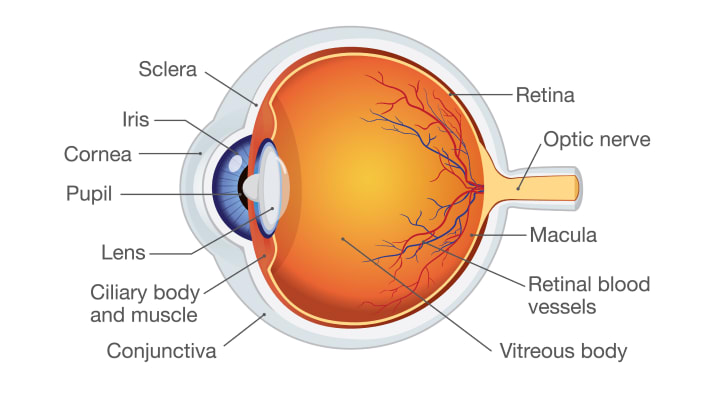
Sending visual information: Millions of axons from light receptor cells are bundled together to be sent to the brain via the optic nerve.
Photoreceptor cells: Light-sensitive cells found in the retina. Cone photoreceptors respond to daylight and well lit environments; rod photoreceptors are most sensitive at low lighting levels.
There are three types of cone cells: red, green and blue. These cells are responsible for color vision. Cones are densely populated in the macula where the light image is focused providing sharp, detailed color vision. Rod photoreceptors are located in the peripheral retina. Rods are most sensitive in low light environments and respond to white light.
There are other types of cells in the retina that send light information to the brain such as for circadian rhythm, sleep cycle and adjusting to various light levels.
What does it mean to not have best corrected 20/20 vision?
In some cases, vision is not correctable to 20/20. It is important to work with your doctor to determine the underlying cause. For 20/20 acuity, the visual system requires each of the components to be functioning properly.
Ocular and systemic conditions that may affect the eyes:
Cataracts: The lens inside of the eyes may become cloudy which diminishes the amount of light that reaches the retina impairing vision.
Age-related macular degeneration: Age-related macular degeneration (AMD) is a degeneration of macular photoreceptors and surrounding tissues. AMD affects central vision needed for reading and seeing faces. [1]
Glaucoma: A group of eye conditions leading to optic nerve damage frequently associated with intraocular fluid pressure imbalance.
Other conditions: High blood pressure, diabetes, genetic disorders may all affect the wellness of the eye.
A comprehensive eye examination is one step in diagnosing the underlying cause of decreased visual acuity. At times, it may be necessary to seek further consultation from a physician and/or sub-specialists.
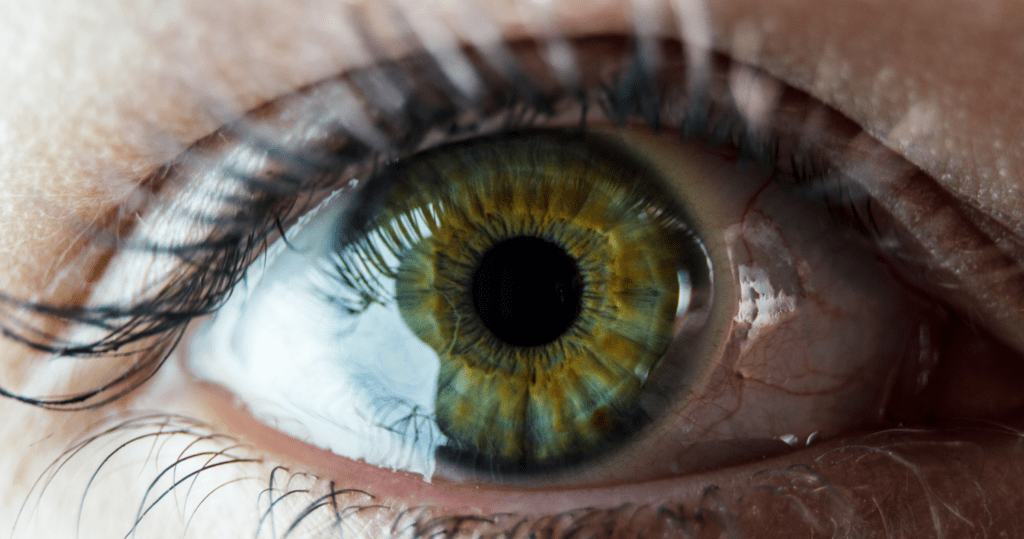
Best tips to support eye wellness
1. Use sunglasses with adequate UV protection for the environment. High altitude skiing and a day at the beach require more UV protection than most everyday activities.
2. Use impact resistant goggles or shields to protect your eyes from injury.
3. Regular exercise supports cardiovascular wellness including the vascular system that supports the eyes.
4. A healthy diet for eye wellness diet [3] is designed to modulate inflammation in the eyes and body. Keep blood sugar levels in a normal range.
Include foods and spices with the nutrients that support wellness of the eyes and body:
- Cold water fatty fish – salmon, barramundi, mackerel
- Foods with anti-inflammatory properties – ginger root, turmeric, green tea, vitamin D enhanced mushrooms
- Foods with lutein and zeaxanthin – green leafy vegetables, eggs with bright orange yolks, paprika, orange bell peppers, goji berries
- Foods rich in vitamin C – citrus, broccoli, bell peppers
- Foods with vitamin E and the minerals zinc, selenium – sunflower seeds, Brazil nuts, walnuts, almonds
See your doctor yearly for a comprehensive eye examination. Importantly, people should get their eyes examined if they notice a change in their vision, loss of vision, headaches, were involved in a car accident or “something” just doesn’t seem right.
Published November 24, 2022|Updated July 13, 2023
SOURCES

Related articles

What are Cataracts?
We’re going to discuss the condition, including causes, treatment, surgery, and prevention.

7 Important Facts You Should Know about Astigmatism
What it is, causes, symptoms, treatment & tips

UV index & how to protect your eyes
What UV index is & how to protect your eyes.


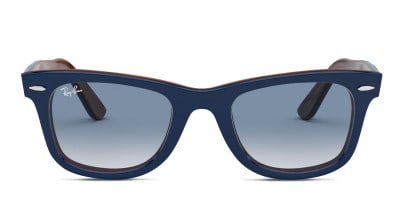 Square
Square
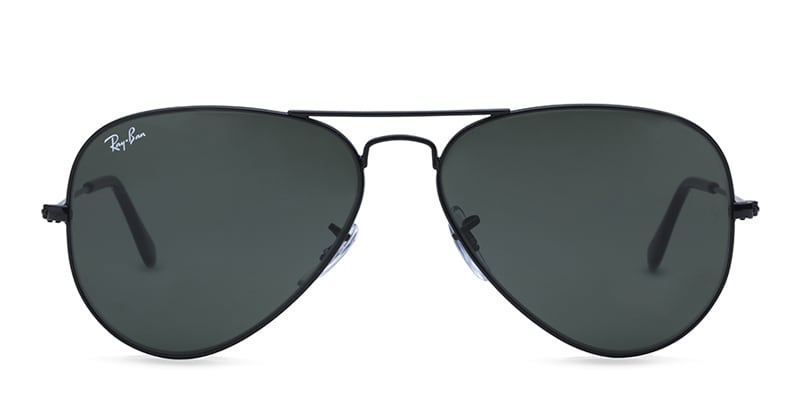 Aviator
Aviator
 Wayfarer
Wayfarer
 Rectangle
Rectangle
 Cat Eye
Cat Eye
 Round
Round

